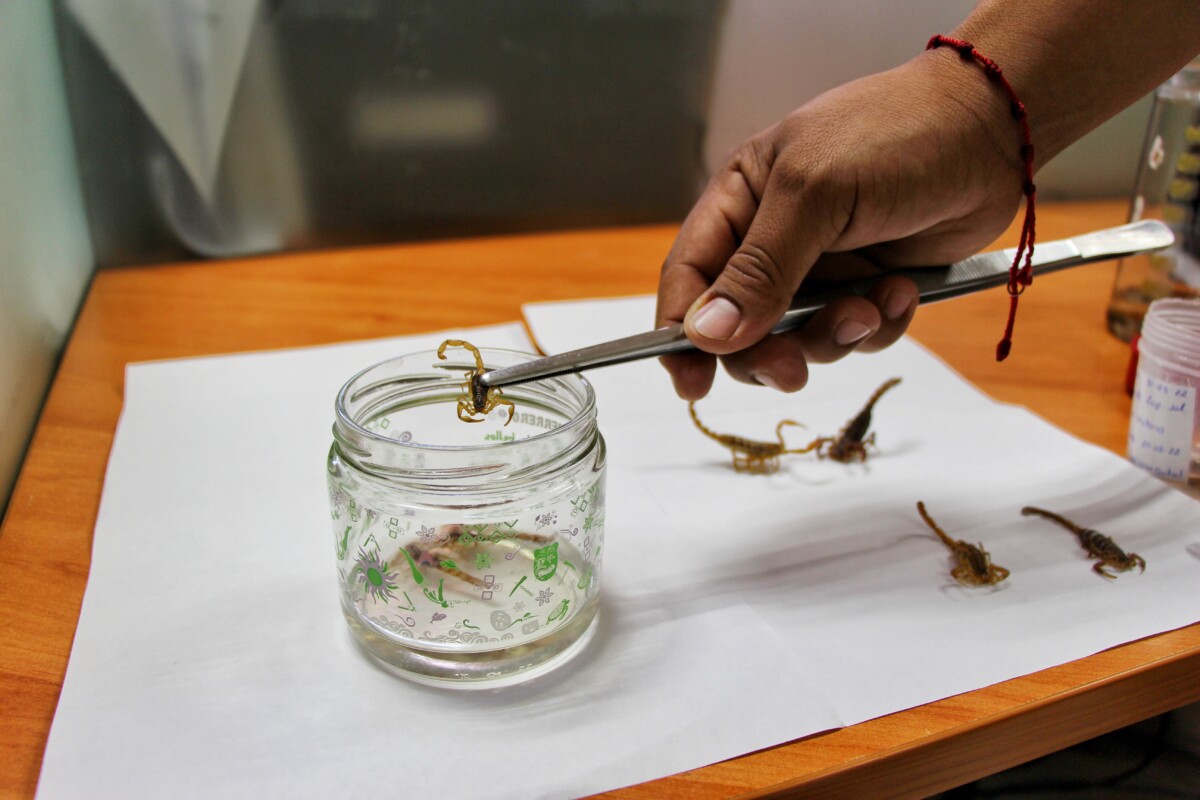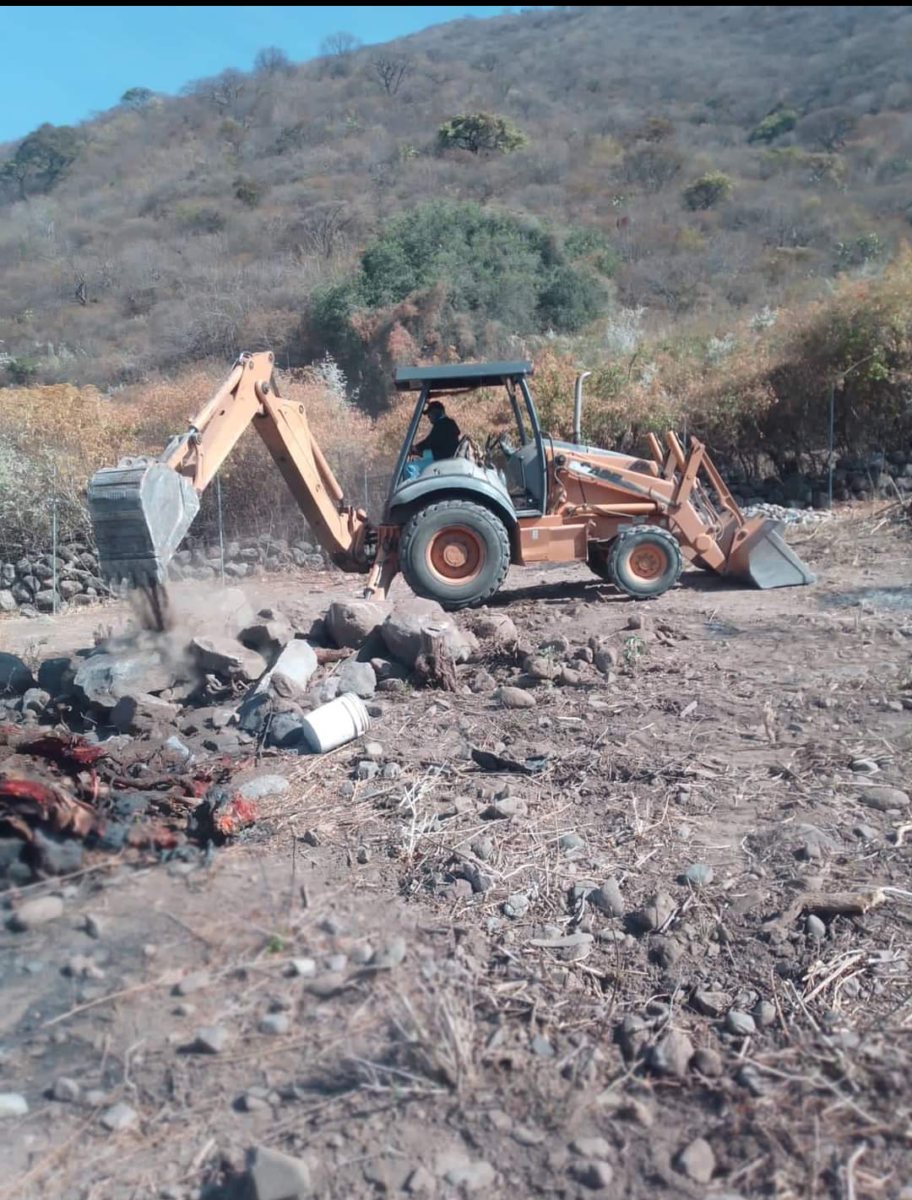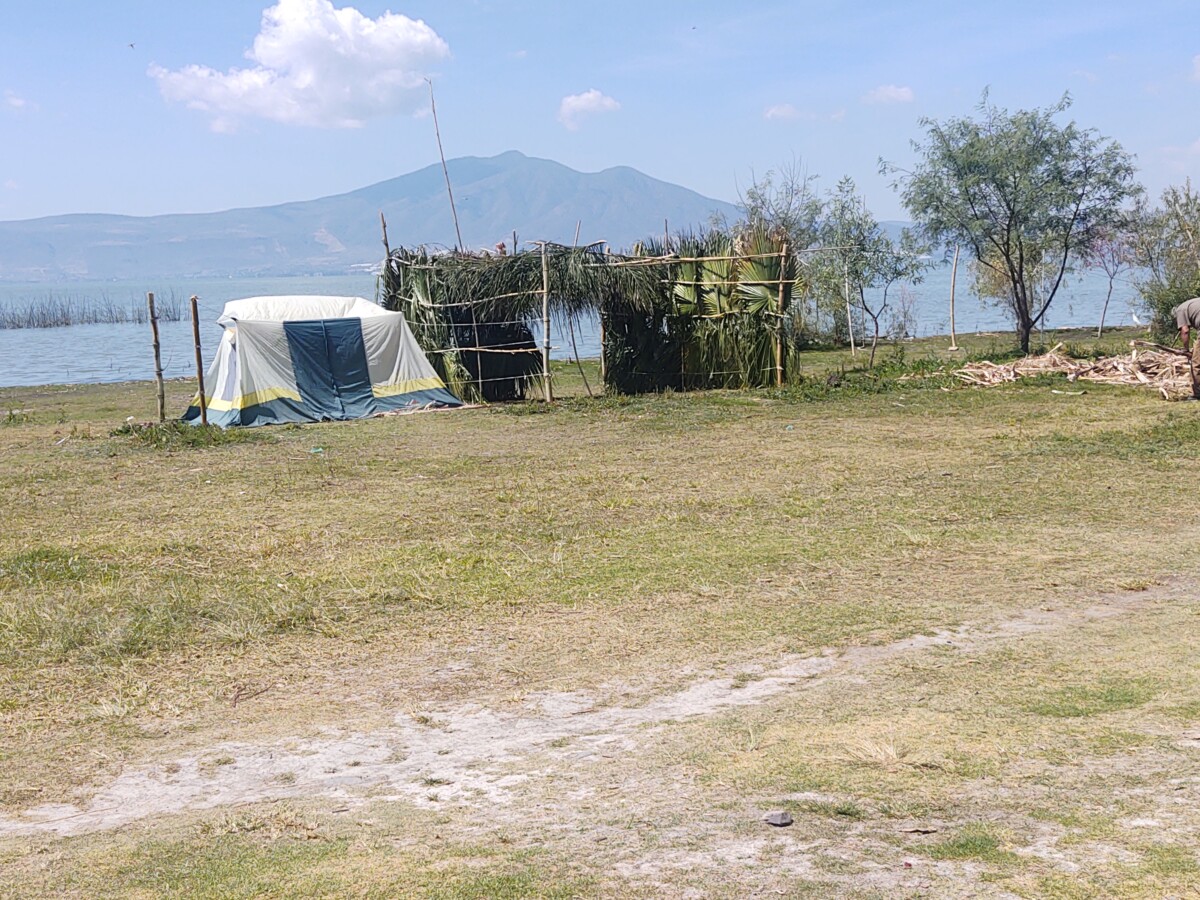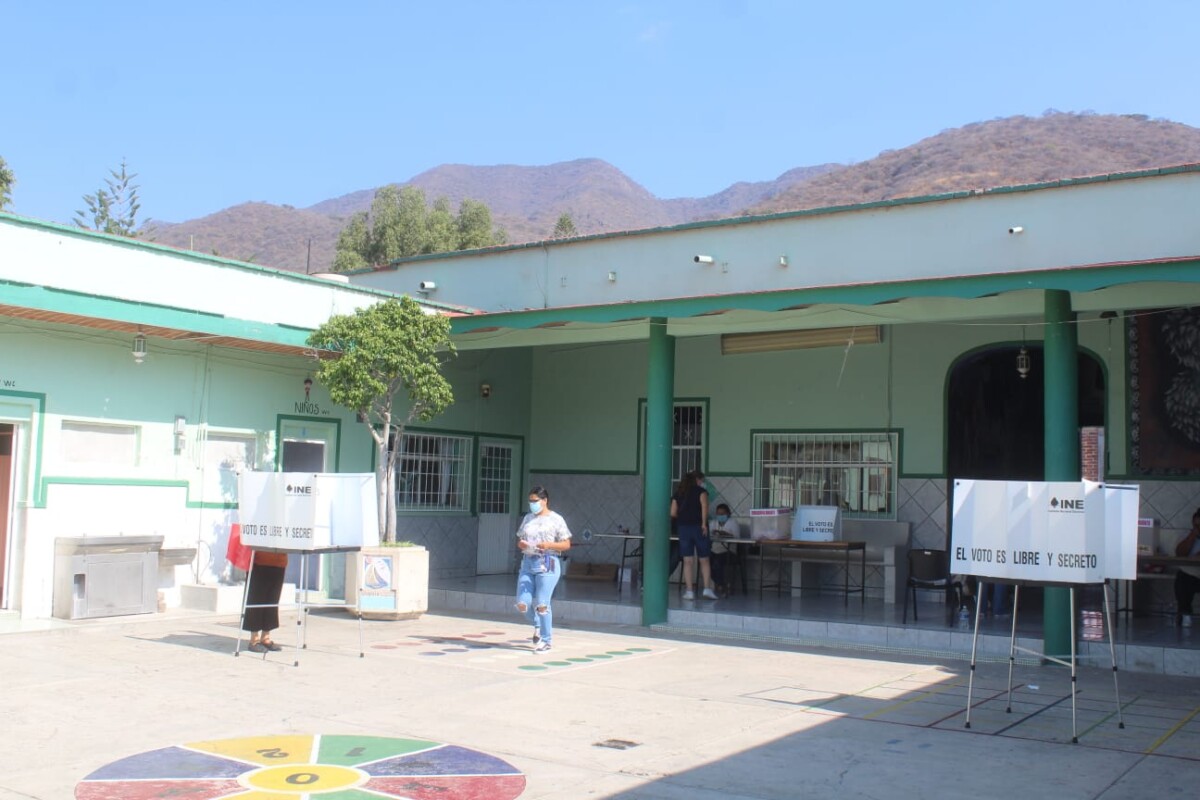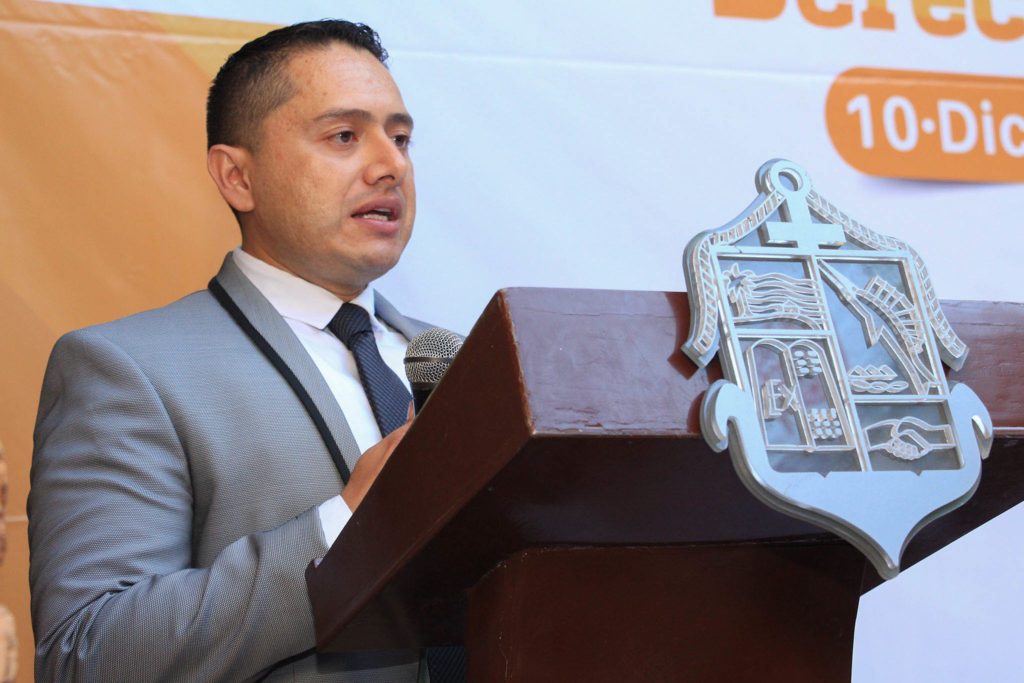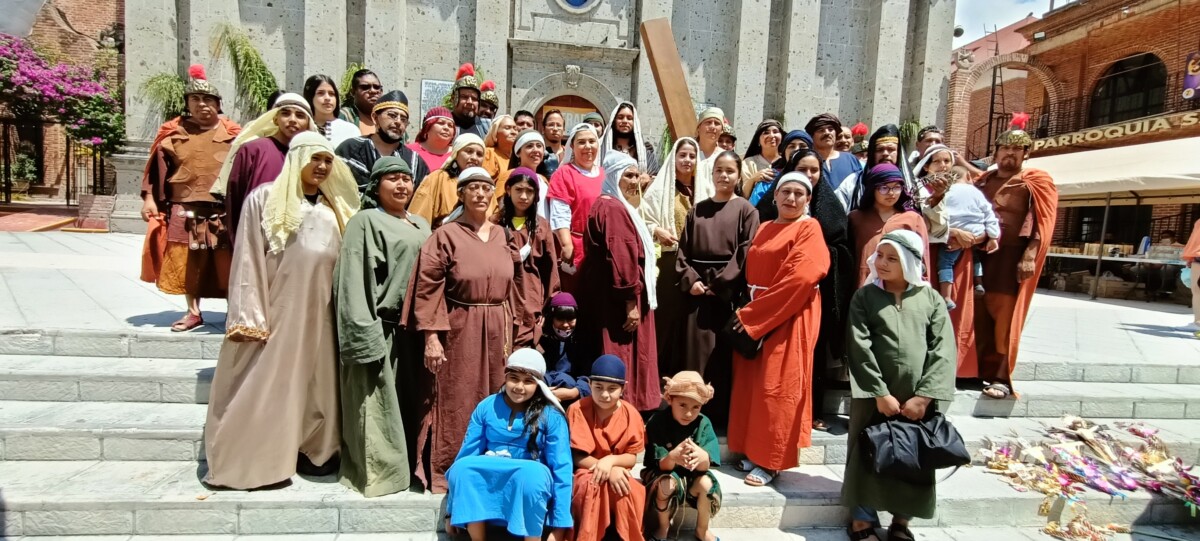Localidades
Ejecutan a un hombre y abandonan vehículos tras balacera en Tuxcueca
Uno de los vehículos asegurados por la Policía del Estado en el municipio de Tuxcueca. Foto: Cortesía.
Redacción.- Un hombre sin vida y al menos cinco vehículos con impacto de bala fueron asegurados por elementos de la policía del Estado de Jalisco luego de un enfrentamiento acontecido durante la madrugada del 23 de abril, en el municipio de Tuxcueca.
El enfrentamiento que ocurrió alrededor de las 02:20 en la calle Azucena al cruce con Madero, dejó a una persona sin vida, la cual fue encontrada atada de manos y con varios impactos de bala, en el interior de una finca que tenía la cortina metálica de la cochera abierta.
En el interior de la finca, cuya fachada contaba con impactos de bala fue asegurada una camioneta Kia Sportage, color gris con placas de Jalisco, mientras en el exterior del domicilio había varios casquillos percutidos de diferentes armas y calibres.
Una motocicleta de bajo cilindraje, una camioneta RAV 4, sin placas y con reporte de robo del 2019; una camioneta Vitara, color gris, con placas de Oaxaca y una camioneta Chevy Van, color blanco con matrícula del Estado de México, también fueron asegurados, todos con impactos de bala.
OPINIÓN: FACETAS DE MÉXICO
Ignacio Ovalle Fernández, fue secretario particular del Presidente Luis Echeverría Álvarez. Foto: Cortesía.
Por: Pascacio Taboada Cortina y Jorge Martínez Cedillo
El organismo “Seguridad Alimentaria Mexicana”, Segalmex, creada por el presidente Andrés Manuel López Obrador al inicio de su administración, apenas transcurridos tres años y meses de gestión, cambió a su director general, Ignacio Ovalle Fernández y, en su lugar, nombró a Leonel Cota Montaño, ex gobernador de Baja California Sur y actualmente secretario ejecutivo del Sistema Nacional de Seguridad Pública. Esto, frente a una corrupción incontrolable en varias delegaciones estatales y regionales. Así, Segalmex, “lejos de apoyar a campesinos de escasos recursos, desnutridos y sin apoyos crediticios, los sumió en la pobreza y desesperanza”, es el comentario de millones de afectados.
Desde el momento del nombramiento de Ignacio Ovalle Fernández, como director general de este organismo público, descentralizado de la Secretaría de Agricultura y Desarrollo Rural, con funciones similares a las que tuvo en su tiempo la Compañía Nacional de Subsistencias Populares (Conasupo) se tuvo la sensación de que continuaría la corrupción en los procesos de recepción de cosechas, comercialización de granos con aplicación de precios de garantía “castigados” por las normas de calidad estrictas.
Ignacio Ovalle Fernández, abogado de profesión, después de haber sido secretario particular del Presidente Luis Echeverría Álvarez, ocupó la titularidad de la Secretaría de la Presidencia en el mismo Gobierno. En el siguiente, a cargo de José López Portillo, fue director general de COPLAMAR. Estuvo fuera del gobierno de Miguel de la Madrid, y regresó al servicio público durante la gestión de Carlos Salinas de Gortari, como director general de Conasupo.
En todos estos años, que fueron décadas, Ovalle Fernández acumuló una amplia experiencia en el sector público, sobre todo en la selección y control de personal, como para creer que fue descuido tanto mal manejo del presupuesto en los procesos de compra y venta de granos alimenticios, fertilizantes para el trabajo de los campesinos; mercancías que utiliza la gente modesta de los pueblos y algunas ciudades pequeñas o medianas, que son tantas con millones de habitantes, que se pierde la idea de la cuantía de fraudes en casi todos los estados de la República, donde se han denunciado fraudes sin que se sepa si los culpables han sido procesados penalmente o hayan “devuelto al pueblo lo robado”.
Ignacio Ovalle Fernández, luego de su sustitución en Segalmex fue nombrado por el presidente López Obrador, como coordinador del Instituto Nacional para el Federalismo y el Desarrollo Municipal, adscrito a la Secretaría de Gobernación.
Las irregularidades en el ejercicio del presupuesto y recursos de Segalmex, han ocurrido, por lo menos, desde hace más de dos años. Sin embargo, poco a poco han salido a la luz pública los fraudes de empleados y funcionarios del organismo. Uno de ellos, se refiere a la destitución, denuncia y procesamiento ante la Fiscalía General de la República, de tres directores de oficinas centrales de Segalmex, por irregularidades en transacciones comerciales y licitaciones. Las áreas administrativas señaladas, fueron las direcciones de Operaciones Comerciales de LICONSA y en la Unidad de Asuntos Jurídicos.
El mismo presidente de la República, durante el mes de febrero de este año, reconoció que la Auditoría Superior de la Federación (ASF) detectó irregularidades por más de 8 mil 600 millones de pesos en Segalmex, a través de sus áreas filiales de Diconsa y Liconsa. En esa oportunidad, el presidente se inclinó “por reunir todos los elementos acusatorios” y dijo que se estaba en proceso de investigación. Remató que “no podemos hacer juicios sumarios antes de contar con la información”.
En otra fecha, el 12 de abril recientemente pasado, un juez federal vinculó a proceso a René Gavira, ex jefe de la Unidad de Administración y Finanzas de Segalmex, por la presunta compra ilegal de 100 mil títulos bursátiles, con valor de más de 100 millones de pesos, con recursos económicos propiedad del organismo Segalmex.
Por otra parte, diversos medios electrónicos y escritos de comunicación, dieron fe de un estudio de la Secretaría de la Función Pública, que detalla una serie de irregularidades en la contratación de servicios de empresas, entre ellas una que no cuenta con empleados dados de alta en el IMSS, y otra, denominada Micro Credit, que no cuenta con una licitación pública, registrada ante la Secretaría de la Función Pública, a la cual Segalmex entregó una cantidad de 245 millones de pesos.
Esta es la triste historia de una empresa del gobierno, que ha fallado no sólo al gobierno federal, sino que ha dejado en la “quinta chilla” a millones de familias campesinas.
Cuenta Jalisco con abasto suficiente de antídoto para picaduras de alacrán
Al corte de la semana epidemiológica 13 del 2022, se reportan 8 mil 570 casos de picaduras de alacrán en Jalisco. Foto: SSJ.
Redacción.- Debido a la temporada de calor, al ser un estado endémico y por la ubicación geográfica en el llamado “Cinturón de Fuego del Pacífico”, en Jalisco se reportan más avistamientos y distribución de alacranes en distintos municipios, por ello la Secretaría de Salud Jalisco exhortó a la población a mantener medidas preventivas.
La SSJ informó que a la fech se cuenta con abasto del antídoto para el veneno de alacrán (faboterápico) en todos los Centros de Salud, Hospitales Regionales y Comunitarios del OPD Servicios de Salud Jalisco.
Las altas temperaturas ocasionan que, como toda fauna, los alacranes también busquen refugio, y es cuando salen de sus espacios para buscar sombra en las casas y cubrirse del sol, explicó la coordinadora estatal del Programa de intoxicación por artrópodos del OPD Servicios de Salud Jalisco, Alejandra Cornejo Magdaleno.
“El 80% de las picaduras se registran en casa, si ya se tuvo contacto con un alacrán lo primero que se debe hacer es mantener la calma, no automedicarse, ni utilizar ningún remedio casero pues esto dificulta el diagnóstico y, lo más importante, acudir de manera inmediata a una unidad de salud; si se atiende a las personas antes de los primeros 30 minutos el resultado es más favorable, los más vulnerables son niños y niñas menores de 5 años y adultos mayores”.
Cornejo Magdaleno agregó que la recámara es el principal sitio de agresión, por eso es de suma importancia seguir las principales acciones preventivas; mientras que las horas de mayor incidencia de picaduras, al ser los alacranes insectos cazadores de hábitos nocturnos son las 00:00 horas, las 12:00 del día, y las 21:00 horas.
Los principales síntomas de la picadura son dolor local, hormigueo, sensación de cuerpo extraño en faringe, hipersecreción de saliva, comezón, inquietud leve, dificultad para tragar y temblor en la lengua.
De igual forma el programa, comentó, se constituye de dos componentes: prevención y control físico y químico para evitar la propagación de alacranes y la atención y dotación de tratamiento para atender las intoxicaciones en todo el estado, en las 13 regiones sanitarias. En caso de picadura si se tiene oportunidad de colectar el alacrán y llevarlo a la unidad en un frasco de vidrio ayuda con el estudio entomológico para conocer la distribución de la especie.
CASOS
A nivel nacional, Jalisco es la entidad donde más picaduras de alacrán se registran; sin embargo, al corte de la semana epidemiológica 13 del 2022, se reportan 8 mil 570 casos, una baja del 11 por ciento en comparación al mismo periodo del 2021 cuando se reportaron 9 mil 646 picaduras.
MEDIDAS DE PREVENCIÓN
- Sacudir ropa, ropa de cama y toallas que hayan estado en el suelo o guardadas por mucho tiempo.
- Revisar y sacudir cunas antes de colocar a los bebés en ellas.
- Revisar y sacudir los zapatos siempre antes de calzarlos, ayudar a los más pequeñitos de casa a hacerlo.
- Colocar mosquiteros y cubrepolvos para evitar que el arácnido entre a nuestros hogares.
- Colocar zoclo dentro de las habitaciones, y si es posible alrededor de la casa, con el fin de evitar que trepen los animales.
- Reparar grietas u hoyos, eliminar material de construcción, madera, tabique dentro y alrededor del domicilio.
- Si realiza actividades que incluya la remoción de escombro y limpieza, proteger las manos con guantes de carnaza largos y gruesos.
Former officials accused of attempted illegal land seizure
On April 12, a machine entered the Los Tepetates property. Photo: Gloria Reza (Facebook).
The Ibon family, owners of a property in Ajijic, reported on April 12 that ex-officials of Chapala tried to use false documents in an attempt to seize their land.
The property owners named the alleged invaders as
- the lawyer Omar Pérez Contreras, who previously served as head of a secretary of the Public Registry of Property. Pérez Contreras also was named in the case of federal invasion in San Antonio Tlayacapan, by the former candidate for local congressman Jesús Arambul Solorio;
- Tonatiuh Cañedo, ex-director of Regulations, Inspection and Surveillance of Chapala, and
- Sergio Antonio Macías Aldana, a notary based in Tuxcueca. Macías Aldana was suspended in January 2020 for 18 months; although the reason is not known, it is speculated that it was due to bad practices.
Sofía Medeles.- The Ibon family claims possession of the property called «Los Tepetates” because they have had the deeds since 1950 which they have kept by inheritance. This property is in La Floresta, next to the Riviera Alta subdivision.
Members of the family found out about this invasion thanks to their neighbors, with whom they have a long-standing friendship, who informed them that heavy machinery had entered their property on Tuesday, April 12. Family members visited the property, where they were threatened by Omar Pérez, Tonatiuh Cañedo and Macías Aldana.
Municipal police were called and verified the deeds, confirming that the supposed owners were incorrect and supporting the Ajijic family.
One of the co-owners stated, «There were several inconsistencies in the deeds they presented. They were looking for the land ‘Los Ahuilotes’, when ours is called «Los Tepetates.» Another inconsistency is the year of acquisition. Their deeds are from 2009 while ours have been in the family for more than two generations. We do not know either the claimants nor the people who they claim sold them the land.»
In addition, the family stated that they found out that the accused had been looking for information about the property and the owning family, offering money and land in exchange for information.
After a heated discussion and the intervention of the police, the alleged invaders gave in and removed their machine, stating that they would look for the land they owned.
«We do not believe it was a mistake, but an attempt at dispossession because of the way they handled themselves and the previous conduct of those involved. There have been similar incidents in Ajijic and San Antonio,» stated one of the complainants.
Finally, members of the Ibon family warned landowners near their property and landowners in general, to be on the alert because similar incidents have been reported. They acknowledged the support they received from Ajijic residents and friends who alerted them and provided them with the necessary information for their investigations. They also asked the authorities to be aware of these practices and methods of invasion, and dispossession of land.
Translated by Elisabeth Shields
First Local Council formed San Juan Cosalá to promote cultural development
Luis Guzmán Zamora was elected President Counselor, while Kany García Villalobos as Secretary; the protest was taken by businesswoman Gema García Arce. Photo: Courtesy.
Alma Serrano.- The first Local Council for Culture, Arts and Education of San Juan Cosalá was officially formed, convened by the El Hospitalito Cultural Center.
After two sessions held on March 23 and 31, the body was formally integrated on April 7, naming the members of the board of directors and its commissions.
Luis Guzmán Zamora, director of the Hijo de México Ballet, was appointed as Chairman of the Board, cultural manager Kany García Villalobos as Secretary and Isidro «El Chivo» Xilonzochitl as Treasurer.

Teachers, artists, citizens and cultural collectives make up the first Local Council of San Juan Cosalá. Photo: Courtesy.
Artists, artisans, graphic artists, researchers, organized art groups, cultural collectives, promoters and citizens in general of the delegation, will make up this body whose objective will be to promote the cultural development of the population, as well as to support the talents of the various artistic disciplines.
In this regard, «El Chivo» considered it important to raise awareness among the population in the cultural field in the absence of a government project.
«We have to encourage people to learn about culture, and then we have to launch a cultural project, we have to create cultural awareness,» he said.
Among the attendees, different teachers and artists from the fields of painting, music, dance, theater, sculpture, education, history and tradition, graphic arts and architecture were appointed.
Translated by Sandy Britton
Easter camping in Ajijic will have rules and timetable
On the beach at the end of Francisco Villa Street, some tarps can already be seen. Photo: Sofía Medeles.
Sofía Medeles . – This year, the residents of Francisco Villa Street have the permission of the delegation to carry out their traditional camping on the shore of the lake during Easter Week, from Thursday, April 14 to Sunday, April 17.
Acting Ajijic delegate Maximiano Macías Arceo said campers came to ask for permission, which was granted, although with some restrictions. For example, tents and tarps can be put up at the end of Francisco Villa Street and the beach of La Crucita.
In addition, the hours for listening to music will be limited. Although he did not mention an exact time, he said he does not want any problems with the neighbors who live near those beaches.
“It is not just for campers, but also any private home or business where they are exceeding the limit of both sound and hours,” Macías Arceo said. “If they do exceed the limits, public security will visit them to maintain order.”
Another topic he mentioned was the garbage generated. He asked for the cooperation of campers to keep the beaches as clean as possible. He said campers must remove their tents or palm leaf huts when their visit is over.
“On Easter Monday, April 18, they should no longer be there,” Macías Arceo said. “We trust they will be responsible and follow the restrictions.»
The tradition of camping on the shores of the lake during Holy Week began in 1992. Families go to the beach, set up their tents and stay on Holy Days – Thursday, Friday, Saturday and Sunday – to spend time with their neighbors.
Translated by Mike Rogers
Ajijic turnout low in presidential recall referendum
A total of 969 votes were counted in the three polling stations installed at Marcos Castellanos Elementary School. Photo: Sofía Medeles.
Sofía Medeles.- The three polling stations installed in Ajijic for the exercise of the Revocation of Mandate 2022 to which the President of the Republic, Andrés Manuel López Obrador (AMLO) acquiesced on April 10, registered low participation.
According to data from the National Electoral Institute (INE), there were a total of 969 voters in the three polling places in town. These were located in: the María Montessori Kindergarten which was for section 466; the Saúl Rodiles Piña Elementary School for section 467; and the Marcos Castellanos Elementary School, which had a nominal list for sections 468 and 469.
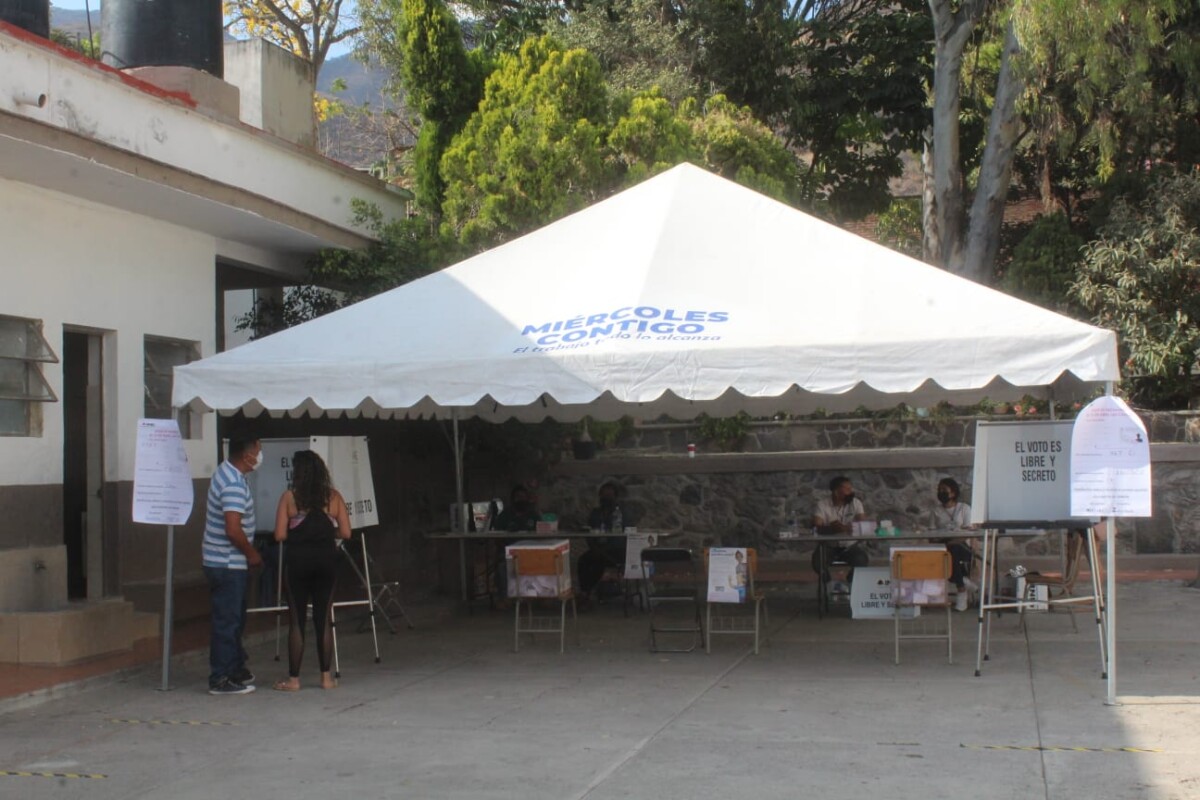
Ballot box at Saúl Rodiles Piña Elementary School. Photo: Sofia Medeles.
Each polling place had more than one thousand ballots available, according to the number of people on the nominal list. At Kínder María Montessori there were 294 votes registered; 255 for AMLO to continue in office, 31 to be recalled and eight null votes.
At Saúl Rodiles Piña Elementary School, 298 votes were counted: 269 in favor of AMLO, 19 votes against, and ten null votes. Finally, at Marcos Castellanos Elementary School, which had the largest turnout, 397 votes were recorded, of which 335 were for the permanence of the President of the Republic, 41 votes in favor of the recall and one null vote.
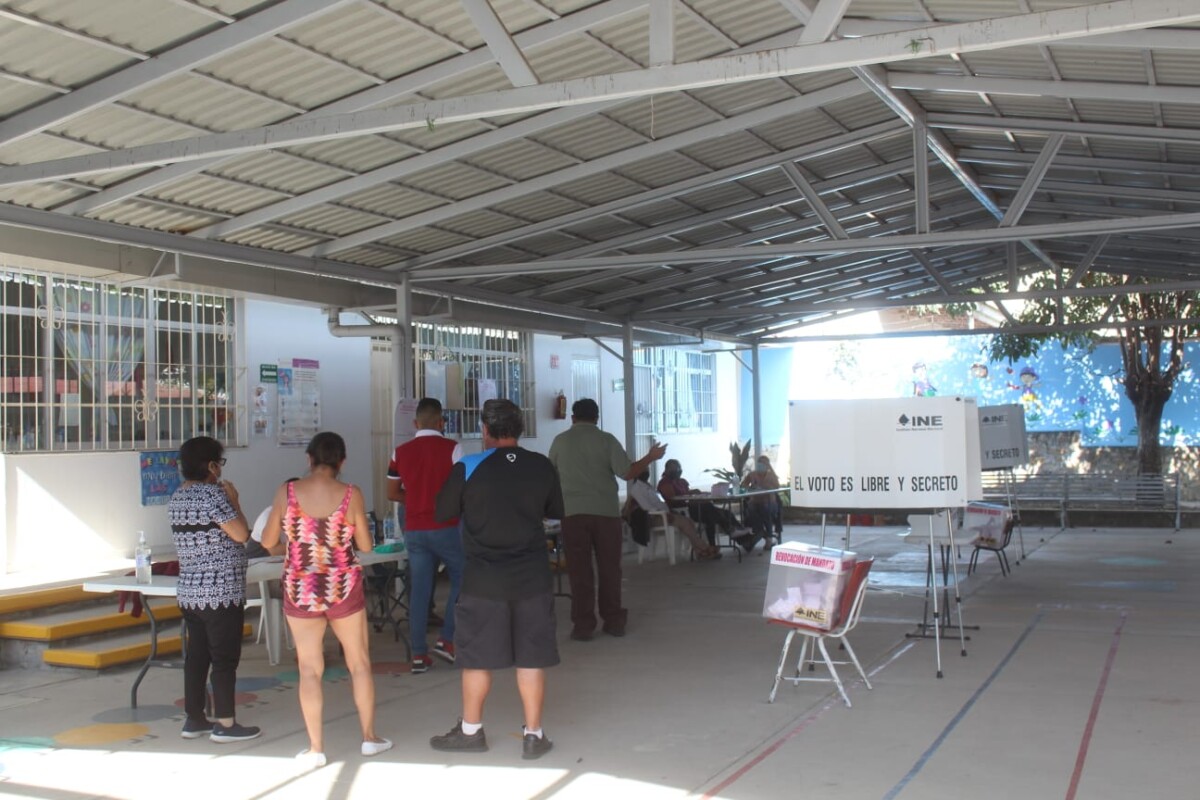
Ballot box at María Montessori Kindergarten. Photo: Sofía Medeles.
The three polling place officials in charge, Cesar, Lourdes and Jose Jorge, said that in spite of the fact that the polling place opened shortly after 8:00 a.m. and closed at 6:00 p.m., there were no incidents during the day. However, they pointed out the lack of participation was due to the lack of knowledge on the part of the population regarding this session.
Although on this occasion, participation was not as low as in the popular consultation on the trial of the former presidents held in August 2021. Sunday, April 10 was calm, according to the officials who attended the polling stations.
Translated by Sydney Metrick
Human Rights Commission asks Jocotepec to provide support to families of murdered police officers
The third general official of the Human Rights Commission (CEDHJ), Aldo Iván Reynoso Cervantes, informed that the Jocotepec City Hall has not responded to the communications that have been addressed to it.
Héctor Ruiz Mejía.– The Jocotepec City Hall has not yet clarified whether it has followed up on the proposals issued by the Jalisco State Human Rights Commission (CEDHJ), following the armed aggression that occurred on March 10.
More than a month after the attack that left two municipal police officers dead and two members of the Civil Protection and Fire Department injured, Aldo Iván Reynoso Cervantes, third inspector general of the CEDHJ, assured those various proposals were issued, to which there has been no response from the municipality.
Attached to the investigation folder issued by the same defense body with folio number 115/2022, proposals were made to support the indirect victims, who suffered harm by losing their loved ones.
This means, support in funeral expenses, settlement, compensation owed to them, as well as attention through health institutions, to provide psychological help and to conduct the mourning process.
Also, in the case of widows left behind in a precarious economic situation, to include them in social programs of the City Hall focused on people with basic needs or, failing that, if these are lacking, to try to channel them to the state DIF (social assistance program) to help those affected. The Jocotepec Council has voted to provide the widows of the slain officers with full pensions.
In the case of the direct victims, who suffered serious injuries in the course of their work, to provide full medical assistance as well as legal advice.
Although the exact deadline was not specified, Reynoso Cervantes said that the municipal government has so far ignored communications to clarify whether the proposals have been carried out and that they are days away from issuing the second warning.
«In the next few days, the term will expire, then we will see if we take it to a complaint or if the requirements were met to finish this investigation file,» said the third representative of the CEDHJ, who added that, in case of being ignored for the second time, it will be issued as a recommendation.
Translated by Nita Rudy
Verbena Jamaica del Pasado benefits 20 sick Ajijic residents
The stalls, decorated with palm leaves, were placed on the main square. Photo: Sofía Medeles.
Sofía Medeles (Ajijic).- The purpose of this year’s Verbena Jamaica del Pasado was to support Manos Solidarias, a group that helps sick people in Ajijic. A total of 20 families of sick people benefited from the kermesse (community fundraiser) held on April 10.
Verbena Jamaica del Pasado is a local event that goes back more than 120 years, where typical Mexican games are played, traditional food is shared or sold,such as tacos, sopes, enchiladas, pozole, tamales,, all prepared by Mexican families who have done so for many generations.
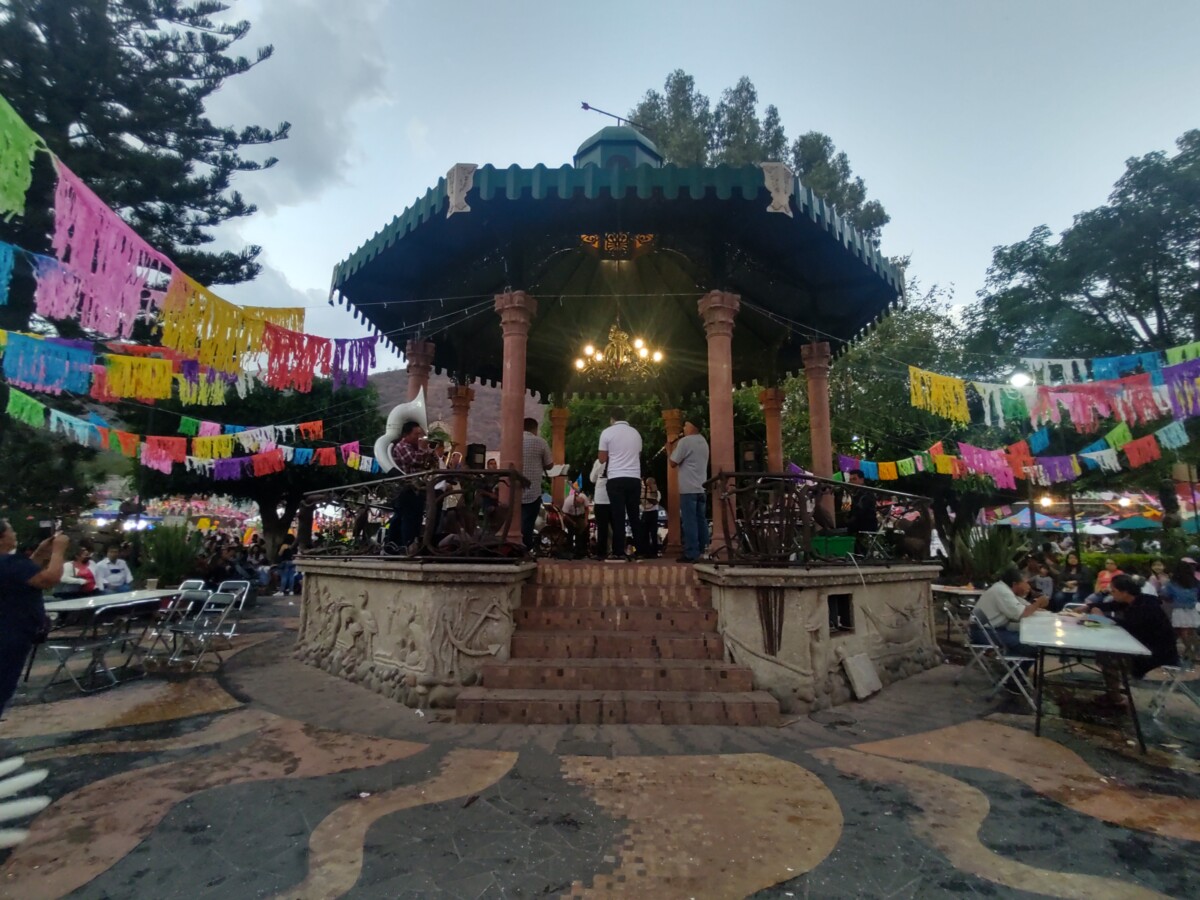
The kiosk was also decorated with papel picado. Photo: Sofía Medeles.
Although the group Pasión de Cristo, which is in charge of the organization of the popular festival, participated with two food and drink stalls, most of the stalls were from relatives of people with illnesses that require high-cost treatments and other medical expenses.
In this edition the verbena extended much longer than usual, having food, drinks, desserts, confetti eggs, and lottery from 8:00 in the morning until 10:00 at night. In some of the stands they had to look for alternative food to sell to cover the longer schedule. The people who sold menudo, for example, at the end, sold roasted meat.
The papaqui, a traditional game that consists of throwing confetti eggs among the attendees, could not be performed, since the musical group did not know the song that is played during this game. Another tradition, the «light of the past,» in which the electric lights are turned off and candles are burned in lamps made of crepe paper to resemble stained glass, was also omitted since the short drizzle that occurred wet the lamps enough to make them unusable.

In spite of the rain, many people remained in the plaza, enjoying the music and the food booths. Photo: Sofía Medeles.
One of the members of Manos Solidarias commented that a donation box was also placed in the main square, in which a little more than four thousand pesos were collected and which was originally going to be distributed among the 20 families that participated. However, both the participants and the group opted to give that money to sick people who could not participate: Sara Enciso, Carlos Pérez Gudiño, Niño Santacruz and Jorge Vega.
Finally, Manos Solidarias stated that they hope to organize another event soon in order to continue supporting the sick and, for his part, Eduardo Ramos Cordero, general director of Pasión de Cristo, supported the idea.
Both groups thanked the contribution of the inhabitants of Ajijic, the tourists who joined in and the visitors from other towns for supporting the cause.
Translated by Sandy Britton
Palm Sunday commemorations returned throughout Lakeside
Cast of the Passion of Christ in the atrium of the parish of St. Francis of Assisi, which this year will have 60 interpreters, plus staff to assist them. The main roles are those of Jesus, Mary, Herod, Pontius Pilate, Judas, and the Priests of the Sanhedrin. Photo: Jazmín Stengel.
Jazmín Stengel.- After two years of not appearing due to the pandemic, the cast of the Chapala 2022 Stations of the Cross made its first public appearance with the re-enactment of the «Triumphal Entry of Jesus into Jerusalem», in the parish of San Francisco de Asís, in the municipal capital of Chapala.
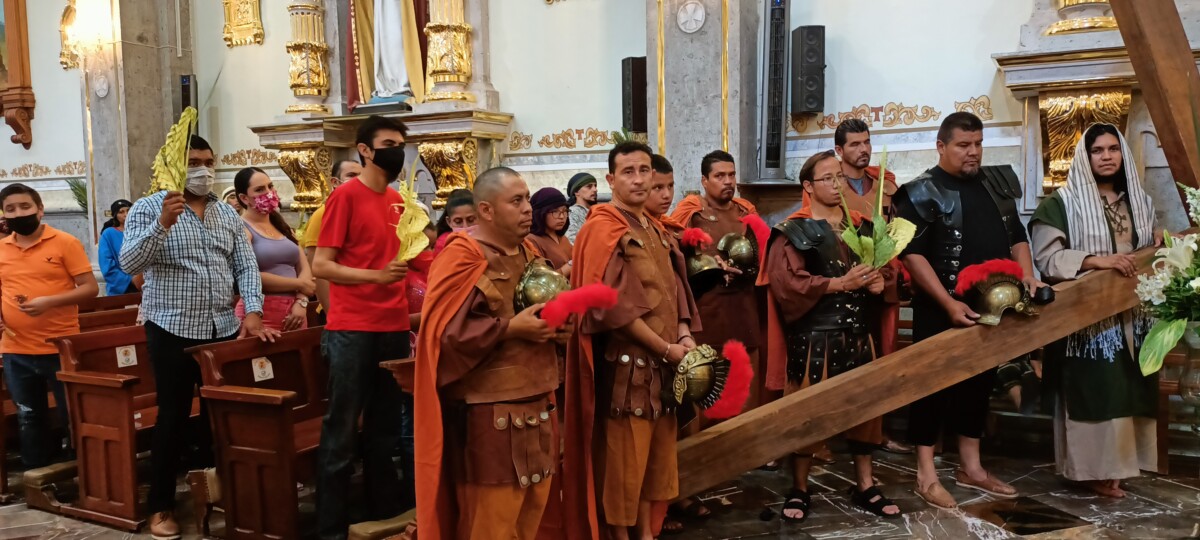
The cast of Viacrucis Chapala 2022, was presented for the first time during ‘The Triumphal Entry of Jesus into Jerusalem’, in the parish of St. Francis of Assisi on Palm Sunday. Photo: Jazmín Stengel.
About 300 people attended the 1:30 pm mass on Palm Sunday to bless their palm branches during the Eucharist, where Joel Salvador Torres Arrayga, 25 years old, stood out in the role of Jesus.
Sixty people form the cast that accompanies Jesus Christ throughout the representation of the trial and his journey to the crucifixion. Joel Salvador played Jesus, Athziri Guadalupe Martínez Real was the Virgin Mary, José Roberto Michel Mendoza was Pontius Pilate and in the role of Herod, Ramiro Moreno López.
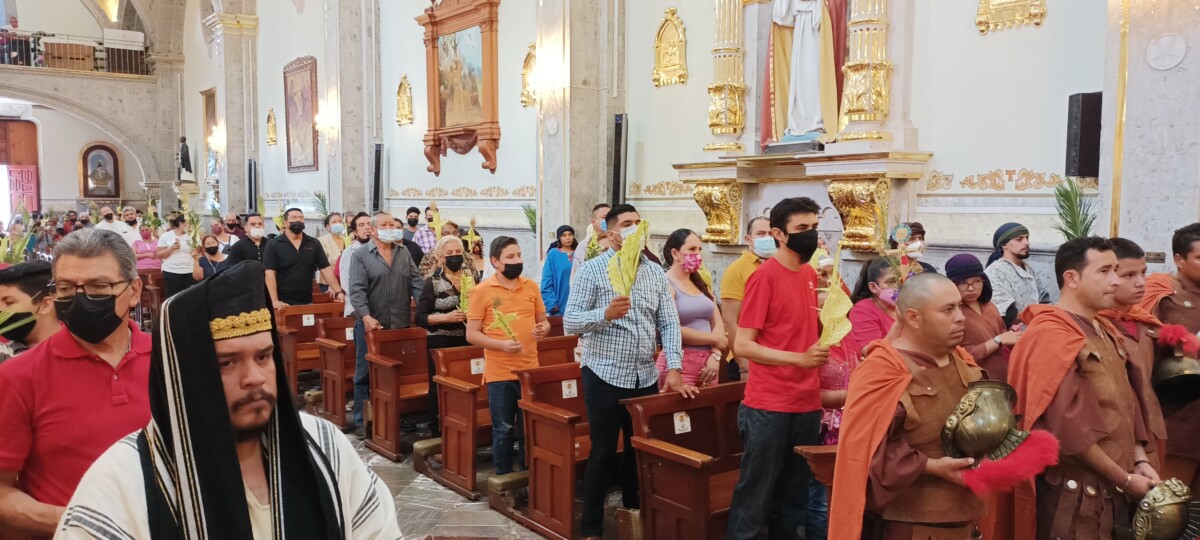
The palm branches to be blessed during Palm Sunday, mostly made of wax palm and wheat, were accompanied by laurel and rosemary. Photo: Jazmín Stengel.
Jesús Alfonso Basulto Anaya participated as Judas, while Carlos Aguayo Ramírez and Jorge Alfonso Villegas López were the priests of the Sanhedrin. The play will be presented on Good Friday, April 15, starting at 9:00 a.m. in the parish atrium.

Parishioner during Palm Sunday service Photo: Jazmín Stengel.
The Palm Sunday celebration took place in all the masses starting at 7:00 am in the neighborhoods of Guadalupe, Tepehua, Lourdes and La Purisima, plus the parish of San Francisco de Asis, in whose precincts they were able to gather from 100 to 300 people per mass, according to one of the collaborators of the parish temple.

Outside the parish church of San Francisco de Asís, six stands from Michoacán were set up selling bouquets made of wax palms and wheat. Photo: Jazmín Stengel.
During the mass at 12:00 and 1:30 in the afternoon, in the parish of St. Francis of Asis there were more than three hundred parishioners present.
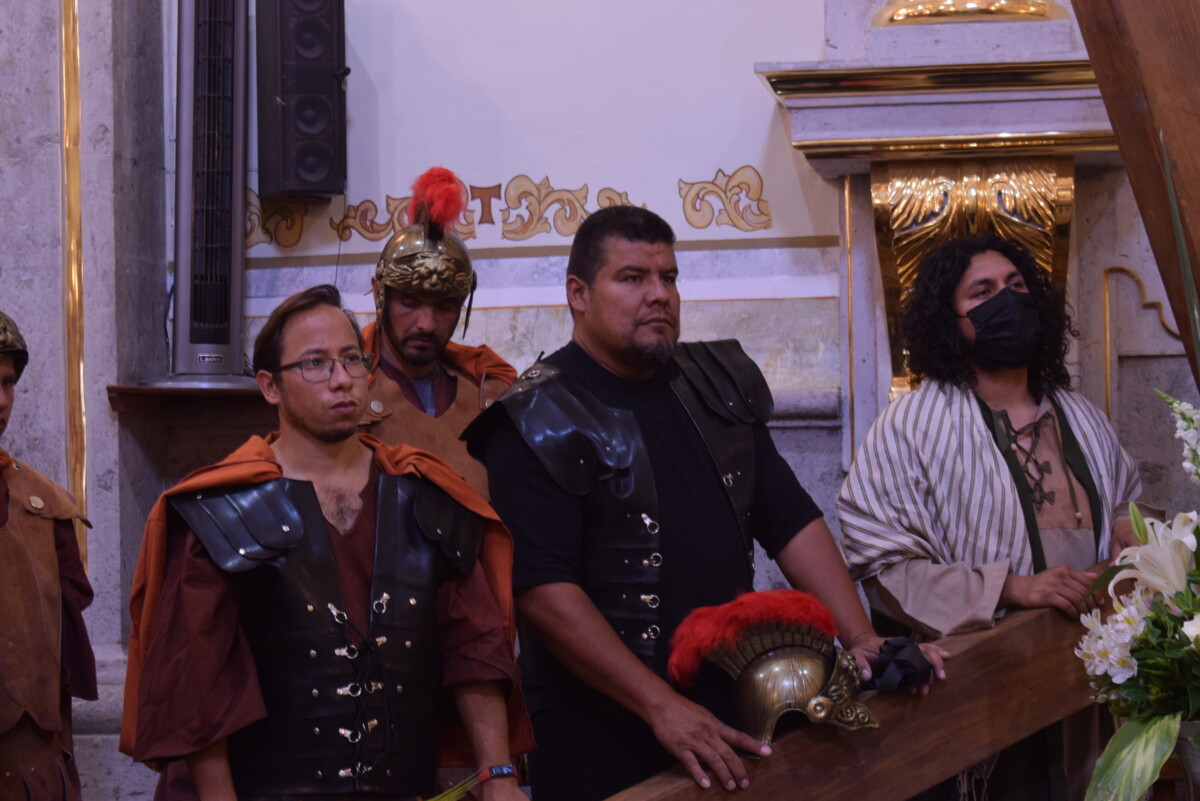
Cast of Roman soldiers
Hundreds of palm branches, accompanied by laurel and rosemary were raised to receive God’s blessing from the priests in charge of the Eucharistic celebration, highlighting the presence of children and young people who alone or in the company of their families attended the ceremony. There were also about six stalls with wax or wheat palms made by people from Michoacán.
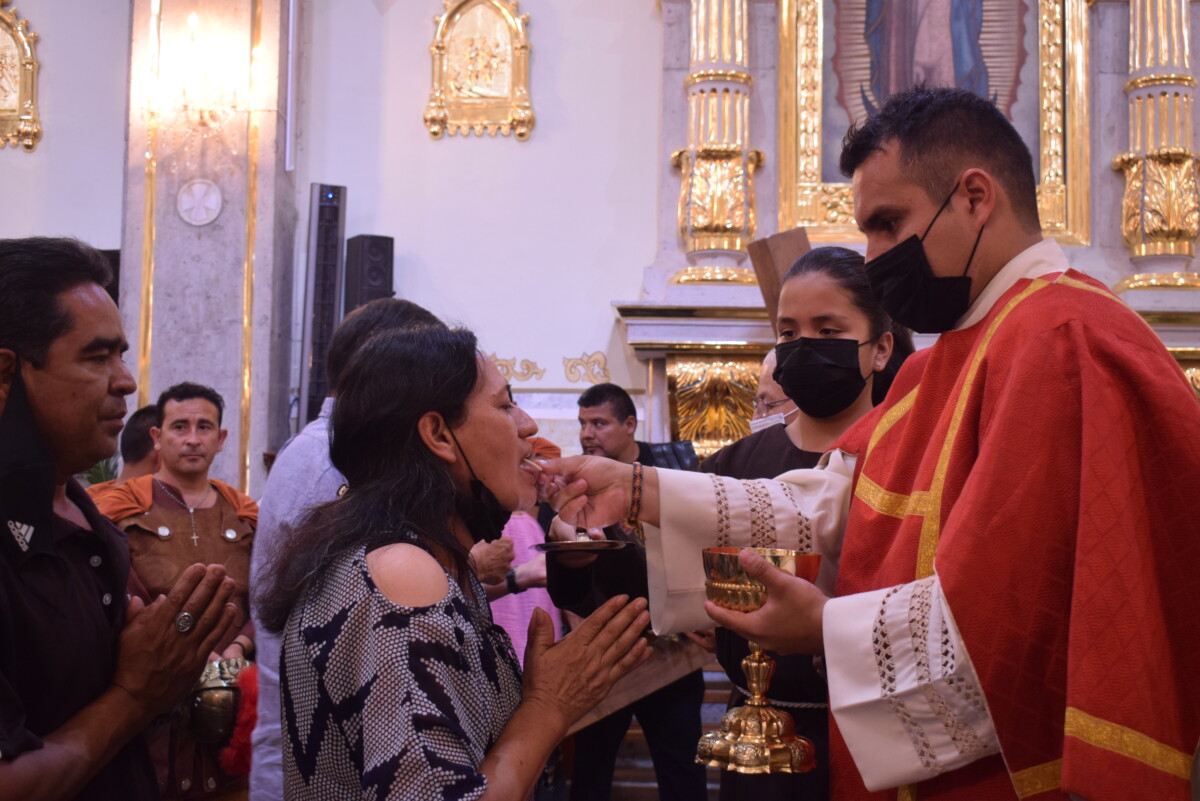
Parishioner receiving the Eucharist during Palm Sunday
The type of palm is irrelevant, its spiritual meaning is based on a symbol of peace with which Jesus was received in Jerusalem. Today, the palms are blessed on Palm Sunday and placed on the altar throughout the year, then burned by the church to use their ashes during the next year’s Ash Wednesday.
Translated by Nita Rudy
© 2016. Todos los derechos reservados. Semanario de la Ribera de Chapala


